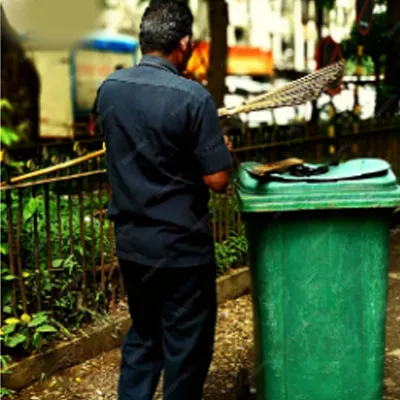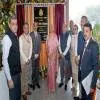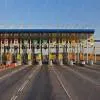- Prakash Chandraker, Managing Director, Schneider Electric Infrastructure
Schneider Electric is set to play a key role in building smart cities, offering the potential to save 30 per cent of energy across the electricity and gas distribution system; about 15 per cent reduction in water losses; integration of power, IT room processes and security management systems; reduction in travel time and traffic delays by 20 per cent; and improving quality of life within the city and competitiveness in the global economy. Schneider Electric India, in partnership with IL&FS, has recently bagged a contract from Naya Raipur Development Authority for the development of the first greenfield integrated smart city in Chhattisgarh.
Prakash Chandraker, Managing Director, Schneider Electric Infrastructure, shares more on the company's offerings in the smart city space and his perspective on related growth and opportunities in conversation with
SHRIYAL SETHUMADHAVAN.
Tell us about the company's role in supporting the smart cities initiative in India? Schneider Electric defines a smart city as efficient, affordable and sustainable. We are almost in all value chain of cities, including smart energy, building, transportation, water and public services. Schneider Electric offers the Internet-based solution called Internet of Things (IoT), which helps in cost reduction and can offer support in terms of scaling. This helps improve quality of life for citizens in cities. In some cities, we have independently worked and delivered in areas of energy, surveillance, and data centre.
We have done the surveillance and energy management system in the city of Puri to help organise their big festivals trouble-free last year. Additionally, we are participating in several bids as part of the 100 smart cities for various verticals, depending on the requirement of the cities.
Any other cities where the company is looking to offer its services?
We have recently bagged the contract with Naya Raipur Development Authority for the development of a smart city in Chhattisgarh. Apart from this, we are active in many cities.
And, we are getting more aggressive in those cities where the requirement is multiple (energy, water, building management system, surveillance system, etc) or for that matter command control centres.
While each city is defining its vision right now, some cities have come up with RFPs. And, we are actively participating in most cities.
What keeps you ahead of your competitors?
Schneider Electric offers fully integrated solutions. We have an in-house integrated technology that works much more smoothly; it is open architecture, so it can be integrated with any other system. So that's truly an open integrated architecture and we consider this the company's USP. This technology helps protect the future and past investments of the customer where he can continue to expand based on the city's requirement, and we continue to provide services as well as add-on applications based on the requirements.
At what stage of development do you get involved?
We get engaged right from the concept stage. It starts off with our presentation to the customer demonstrating how the technology works and its benefits to the citizens and the government (who is investing) and considering the economies of the city. So we are engaged right from the conceptual stage to the handholding even beyond the commissioning period.
The IoT market is growing. Do you foresee any challenges for the company amid this growth?
In many cities, especially in the power sector, there is a good level of digitisation in generation and transmission. But if you see the distribution segment, it may be at just 15-20 percent. So it's a long way to go to really reap the benefits. Until and unless there is a defined roadmap to reach the right level, the desired benefit will not be available to most utilities. And, this is where cities can benefit by engaging with companies such as Schneider Electric. We can share some of the implemented utilities along with the benefits and the return on investments that is coming along.
Tell us about the growth of the utility market. How do you see it impacting the company's growth going forward?
The utility market is actually growing, and is more in line with the GDP. There has also been de-growth in some industry segments. However, the market growth to an extent impacts the growth of the company. Also, we are quite positive about many of the smart city initiatives by the government and foresee several opportunities for the company. The width and depth of the offerings we have are unique compared to the competition.
Speaking of smart buildings, tell us about your offerings.
We are involved in several smart buildings, especially in the areas of smart energy and lighting. We provide a complete building management system with end-to-end solutions, where a benchmark in terms of the energy consumption as well as overall efficiency right from the access control system, analysing pattern, etc, can be done.
Where is the RoI in Schneider's offerings?
Take the power vertical, for example - transmission and distribution losses are almost to the tune of 30 per cent. Now, by deploying a smart energy offering from Schneider Electric, one can improve the utilisation of the asset and reduce the aggregate, technical and commercial losses significantly, which is half of what the loss is today. With the digital technology we are providing in IoT, one can distribute much more power, which will help get much more revenue. So the break-even period - depending on the losses, network and system - can be four to five years.
Are there any suggestions or recommendations you would like to make for the success of smart cities in India?
Most cities are defining their vision, putting together a perfect plan. My recommendation would be to have a strong commitment for execution; having close monitoring in deployment to really make it successful and reap the benefits of the whole project or vision that has been created. So a strategy for execution is crucial for all cities to benefit, going forward.
To share your views on this interview, write in at feedback@ConstructionWorld.in




















